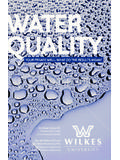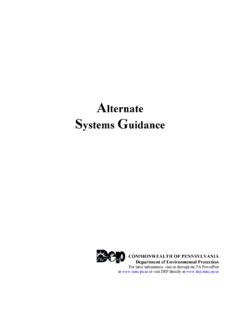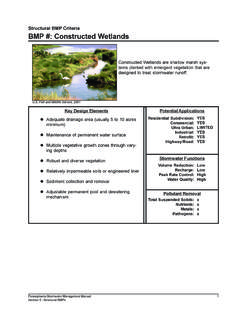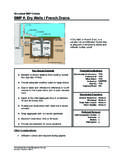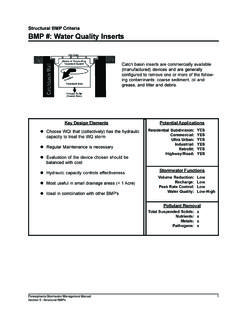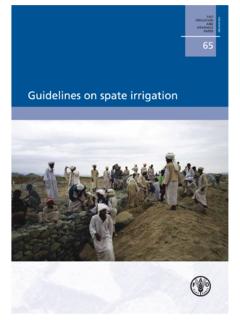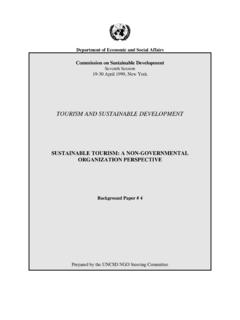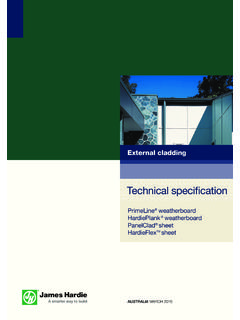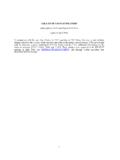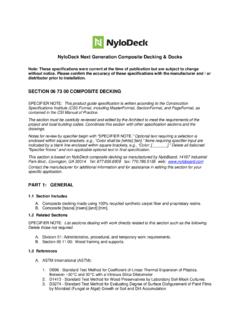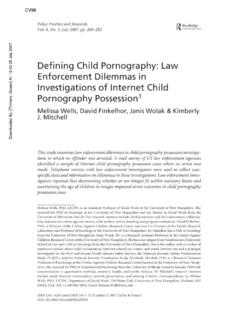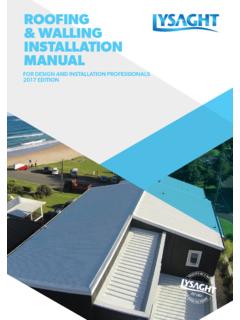Transcription of Reuse of Treated Wastewater Guidance Manual
1 DEPARTMENT OF ENVIRONMENTAL PROTECTION Bureau of Water Supply and Wastewater Management DOCUMENT NUMBER: 362-0300-009 TITLE: Reuse of Treated Wastewater Guidance Manual EFFECTIVE DATE: Upon notice of publication as final in the PA Bulletin AUTHORITY: Act 537 of 1966, the Pennsylvania Sewage Facilities Act (as amended), the Clean Streams Law (35 ) and 25 Pa. Code Chapter 91. POLICY: To reduce the demand on potable water supplies from groundwater and surface waters in the Commonwealth by reusing Treated Wastewater where appropriate.
2 PURPOSE: To provide Guidance to Department Staff and the Public for reusing Treated Wastewater in an environmentally protective manner in accordance with Department Regulations. APPLICABILITY: This Guidance applies to the Reuse of Treated Wastewater from Domestic Wastewater Treatment Facilities. DISCLAIMER: The policies and procedures outlined in this Guidance are intended to supplement existing requirements. Nothing in the policies or procedures shall affect regulatory requirements. The policies and procedures herein are not an adjudication or a regulation.
3 There is no intent on the part of DEP to give the rules in these policies that weight or deference. This document establishes the framework within which DEP will exercise its administrative discretion in the future. DEP reserves the discretion to deviate from this policy statement if circumstances warrant. PAGE LENGTH: 17 pages LOCATION: Volume 33, Tab 36 362-0300-009 / DRAFT December 17, 2005 / page i Reuse of Treated Wastewater Guidance Manual I. INTRODUCTION A.
4 ACTIVITIES COVERED BY THIS Manual This Manual was developed to assist in implementing a program to Reuse Treated Wastewater . The approval of any activity listed in this Manual may only occur under the authority of a permit issued by DEP. B. ACTIVITIES NOT COVERED BY THIS Manual This Manual does not cover land application of Wastewater for additional treatment purposes. For information on that subject see the Department s Manual for Land Application of Treated Sewage and Industrial Wastewater .
5 C. INFORMATION CONTAINED IN THIS Manual This Manual includes design, operation, and maintenance requirements for Wastewater systems discharging Treated water for beneficial Reuse . Using this Manual , treatment plant owners and operators can establish flexible designs and sound engineering practices for managing Wastewater in an environmentally sound manner. The Manual is also intended to ensure Wastewater discharges are free from substances that pose a serious threat to the public health, safety, and welfare.
6 This Manual also includes: Types of Reuse possible Details on the documents and reports needed to receive approval from the Department An explanation of the approval process, the operations protocol process, and the report review How to implement a water Reuse program A summary of the treatment requirements for various Reuse applications Effluent level requirements D. BENEFITS OF WATER Reuse Reuse reduces demands on valuable ground water supplies used for drinking water and irrigation. Reuse helps reduce pollutant loading to surface waters.
7 Reuse may postpone costly investment for development of new water sources and supplies. Reuse allows multiple uses of land for agriculture and Reuse of Treated water. Reuse can save money and can provide aesthetic value. Reuse can allow for non-discharge alternatives in Special Protection Watersheds 362-0300-009 / DRAFT December 17, 2005 / page 1 II. PLANNING REQUIREMENTS FOR BENEFICIAL Reuse SYSTEMS A. SOURCES OF Treated EFFLUENT FOR Reuse For the purposes of this Guidance , the source of Treated effluent will be from Domestic Wastewater Treatment Facilities.
8 This will not address Reuse from industrial processes except indirectly if the Domestic Wastewater Treatment Facility has pretreatment programs or if the water is reused within the same industrial facility that generated it. Existing sources must be characterized to roughly establish the effluent s suitability for reclamation and Reuse . To compare the quality and quantity of available Reuse water with requirements of potential users, information on the operation and performance of the existing Domestic Wastewater Treatment Facilities and related facilities must be examined.
9 Important factors to consider in this preliminary stage of Reuse planning are: Level of treatment ( primary, secondary, advanced) and specific treatment processes ( , ponds, activated sludge, filtration, disinfection, nutrient removal) Effluent quality Effluent quantity (daily and seasonal average, maximum, and minimum flows) Industrial Wastewater contributions to flow System reliability Supplemental facilities ( , storage, pumping, transmission) B. POTENTIAL USES OF THE WATER The DEP has identified 4 main categories of water Reuse .
10 They are: Public Access Systems Restricted Access and Non Edible Crop Systems Industrial Systems Groundwater Recharge Systems 1. Public Access Systems Public access systems involve the use of reclaimed water where public exposure is likely and can include: Irrigation of public parks and recreation centers, athletic fields, school yards and playing fields, highway medians and shoulders, and landscaped areas surrounding public buildings and facilities Irrigation of the landscaped areas of single-family and multi-family residences, general washdown, and other maintenance activities Irrigation of landscaped areas surrounding commercial, office, and industrial developments Irrigation of golf courses Commercial uses such as vehicle washing facilities.
